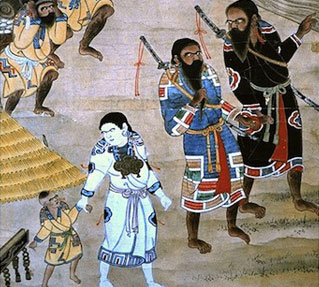stupa
Buddhist monument in mound form, often containing relics. The oldest known prototypes (c. 700 BC) are the enormous mounds of earth at Lauriya Nandangarh in NE India, which were the burial places of royalty. The wooden masts embedded in the center of these mounds probably carried the umbrellas that served as a symbol of royalty and authority. Early Buddhists appropriated not only the royal symbol of the stupa but also used the umbrella as a symbol for the Buddha. Many of the most significant monuments of the Buddhist world are stupas, and they can be found in every country in which Buddhism has been practiced. Some examples are the Thuparama dagoba (244 BC) in Sri Lanka, Borobudur in Java (8th or 9th cent. AD), and the Mingalazedi stupa in Myanmar (1274 AD). In East Asian Buddhist architecture, the function of the stupa has been taken over by the pagoda. (from The Columbia Encyclopedia, Sixth Edition. Copyright © 2001-05 Columbia University Press).
There is currently no content classified with this term.











